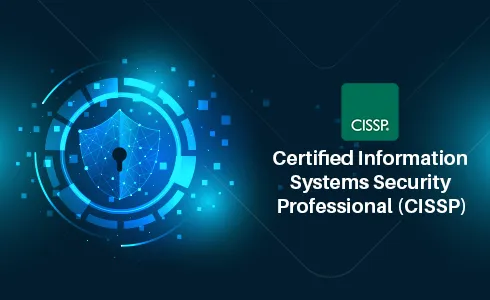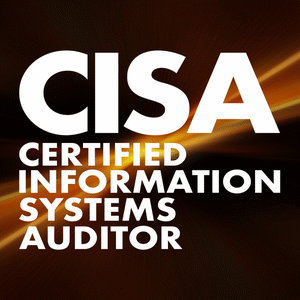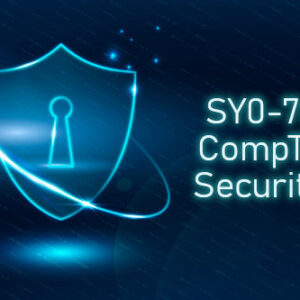Your cart is currently empty!
Certified Information Systems Security Professional (CISSP)
Key Features:
- Simulation test at the end of training to get you exam-ready
- Includes 5 Sample Papers, Each with 150 Questions
- CISSP Exam Voucher Included
- 8X higher interaction in live online classes conducted by industry experts
- Up-to-date CISSP curriculum with interactive exercises
- Includes 5 Sample Papers, Each with 150 Questions
Skills Covered :
- Security and Risk Management
- Security Architecture and Engineering
- Identity and Access Management IAM
- Security Operations
- Asset Security
- Communication and Network Security
- Security Assessment and Testing
- Software Development Security
Description
Certified Information Systems Security Professional (CISSP) is one of the world’s premier cybersecurity certifications offered for professionals worldwide.
Created By Educoresolution.com
Module 1: Security and Risk Management
Understand, adhere to, and promote professional ethics
Understand and apply security concepts
Evaluate and apply security governance principles
Determine compliance and other requirements
Understand legal and regulatory issues that pertain to information security in a holistic context
Understand requirements for investigation types (i.e., administrative, criminal, civil, regulatory, industry standards)
Develop, document, and implement security policy, standards, procedures, and guidelines
Identify, analyze, and prioritize Business Continuity (BC) requirements
Contribute to and enforce personnel security policies and procedures
Understand and apply risk management concepts
Understand and apply threat modelling concepts and methodologies
Apply Supply Chain Risk Management (SCRM) concepts
Establish and maintain a security awareness, education, and training program
Module 2: Asset Security
Identify and classify information and assets
Establish information and asset handling requirements
Provision resources securely
Manage data lifecycle
Ensure appropriate asset retention (e.g., End-of-Life (EOL), End-of-Support (EOS))
Determine data security controls and compliance requirements
Module 3: Security Architecture and Engineering
Research, implement and manage engineering processes using secure design principles
Understand the fundamental concepts of security models (e.g., Biba, Star Model, Bell-LaPadula)
Select controls based upon systems security requirements
Understand security capabilities of Information Systems (IS) (e.g., memory protection, Trusted Platform Module (TPM), encryption/decryption)
Assess and mitigate the vulnerabilities of security architectures, designs, and solution elements
Select and determine cryptographic solutions
Understand methods of cryptanalytic attacks
Apply security principles to site and facility design
Design site and facility security controls
Module 4: Communication and Network Security
Assess and implement secure design principles in network architectures
Secure network components
Implement secure communication channels according to design
Module 5: Identity and Access Management (IAM)
Control physical and logical access to assets
Manage identification and authentication of people, devices, and services
Federated identity with a third-party service
Implement and manage authorization mechanisms
Manage the identity and access provisioning lifecycle
Module 6: Security Assessment and Testing
Design and validate assessment, test, and audit strategies
Conduct security control testing
Collect security process data (e.g., technical and administrative)
Analyze test output and generate report
Conduct or facilitate security audits
Module 7: Security Operations
Understand and comply with investigations
Conduct logging and monitoring activities
Perform Configuration Management (CM) (e.g., provisioning, baselining, automation)
Apply foundational security operations concepts
Apply resource protection
Conduct incident management
Operate and maintain detective and preventative measures
Implement and support patch and vulnerability management
Understand and participate in change management processes
Implement recovery strategies
Implement Disaster Recovery (DR) processes
Test Disaster Recovery Plans (DRP)
Participate in Business Continuity (BC) planning and exercises
Implement and manage physical security
Address personnel safety and security concerns
Additional information
| Pricing Options | Complete Assured Package, Training, Training + Examination |
|---|
Related Products
-
Certified Cloud Security Professional (CCSP) Training & Certification
Price range: $549.00 through $3,499.00 -
Certified Information Security Manager (CISM)
Price range: $499.00 through $2,200.00 -
Certified Information Systems Auditor (CISA)
Price range: $499.00 through $2,300.00 -
CompTIA-SY0-701-Security+ Certification ( SY0-701 )
Price range: $499.00 through $1,299.00






Reviews
There are no reviews yet.